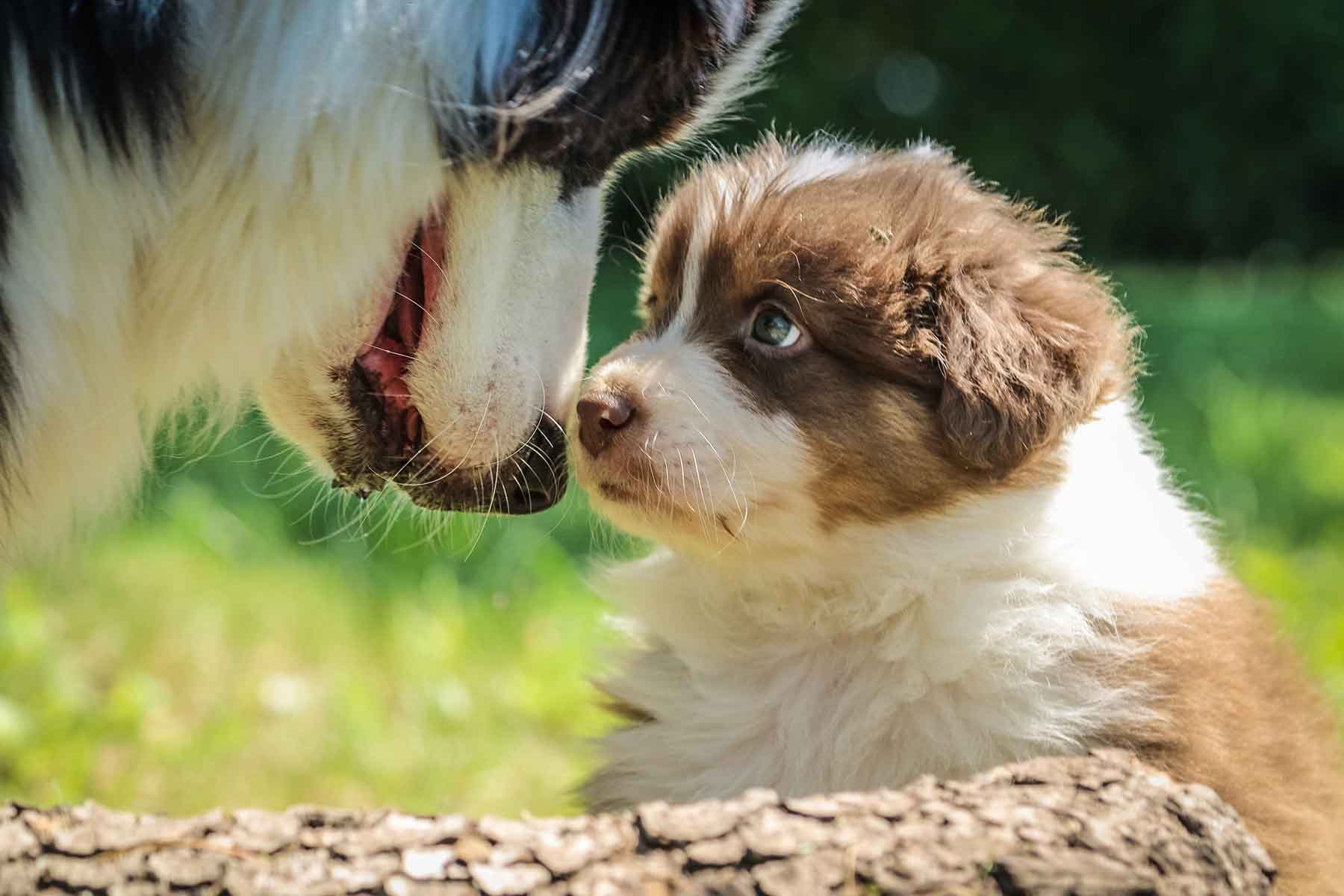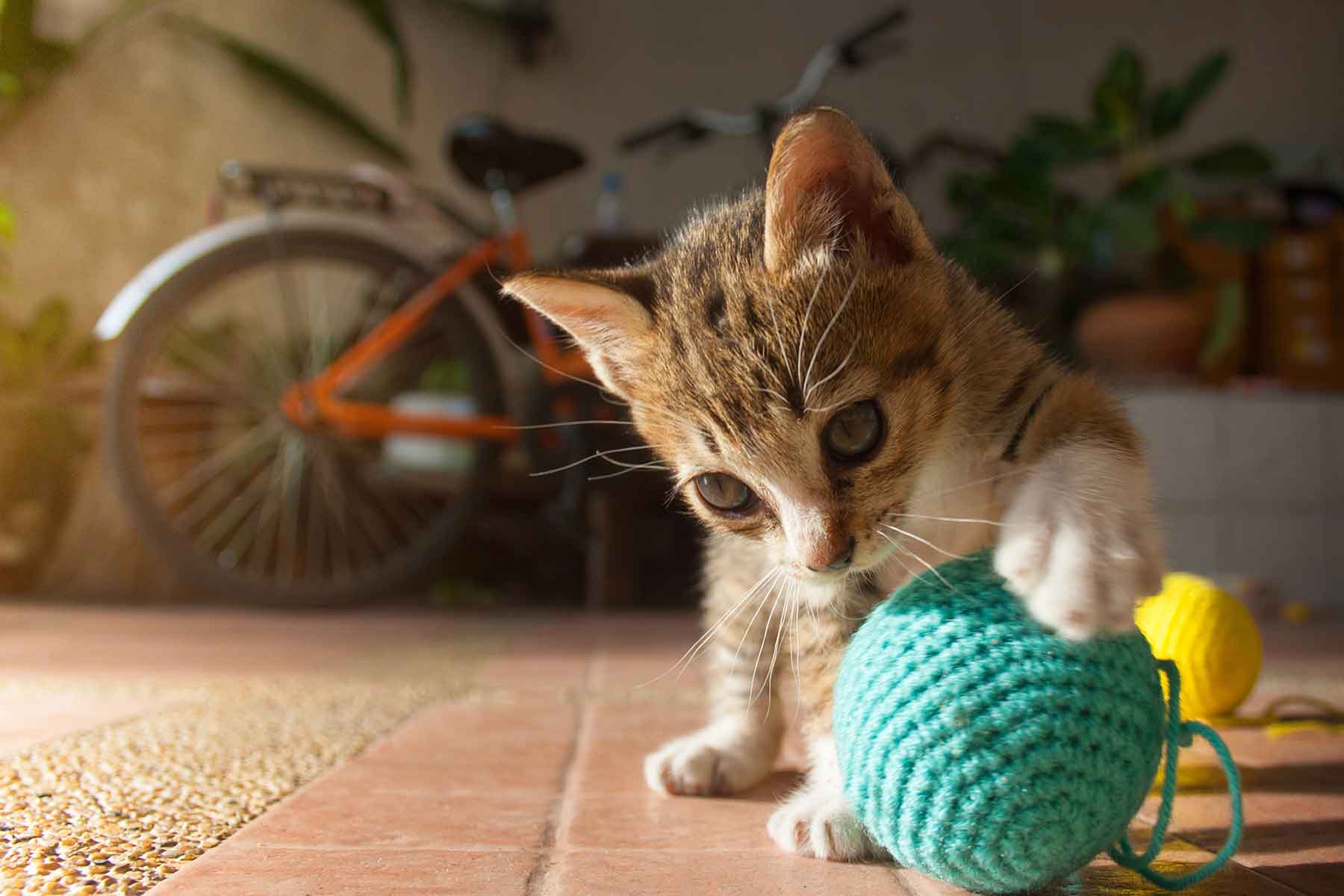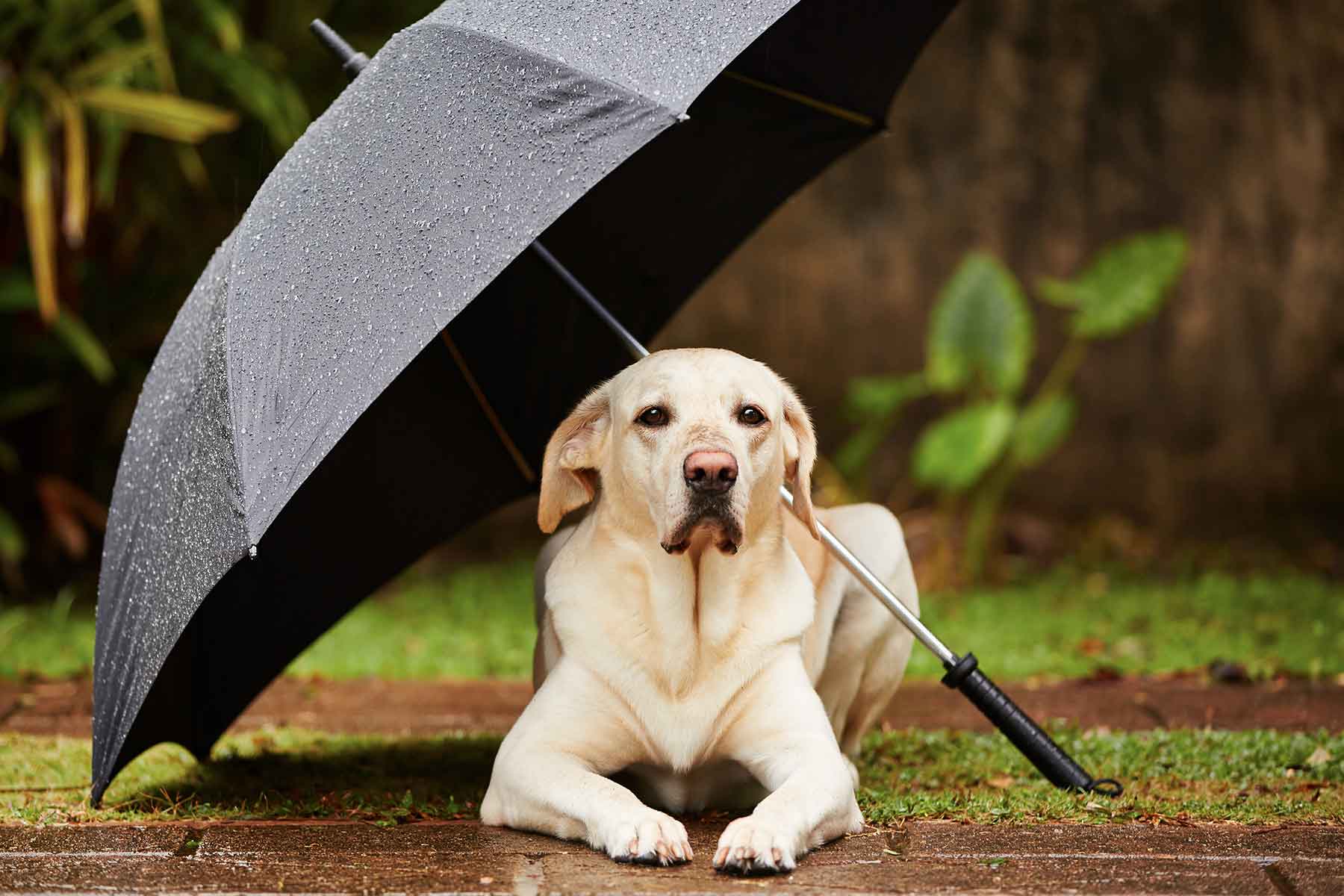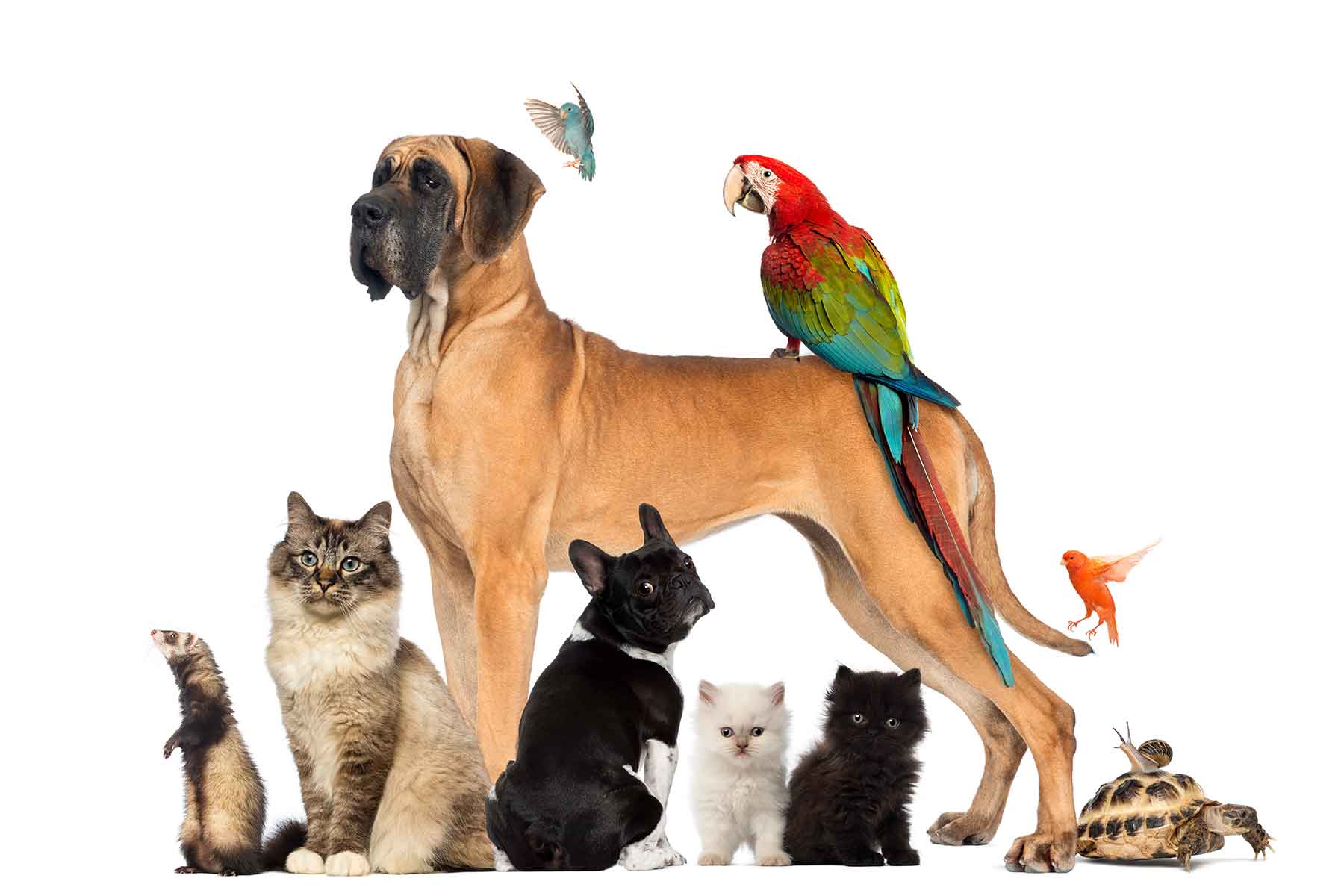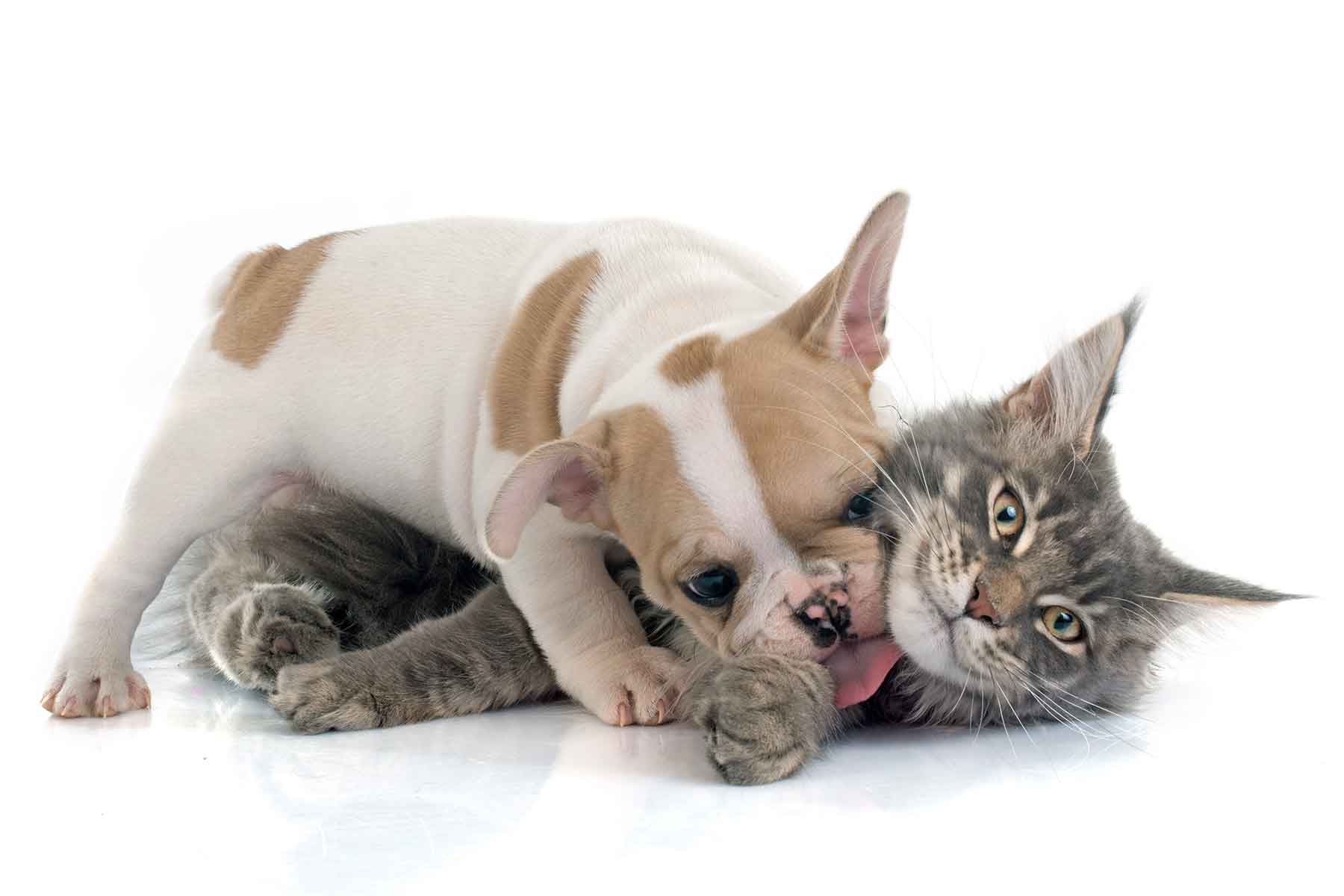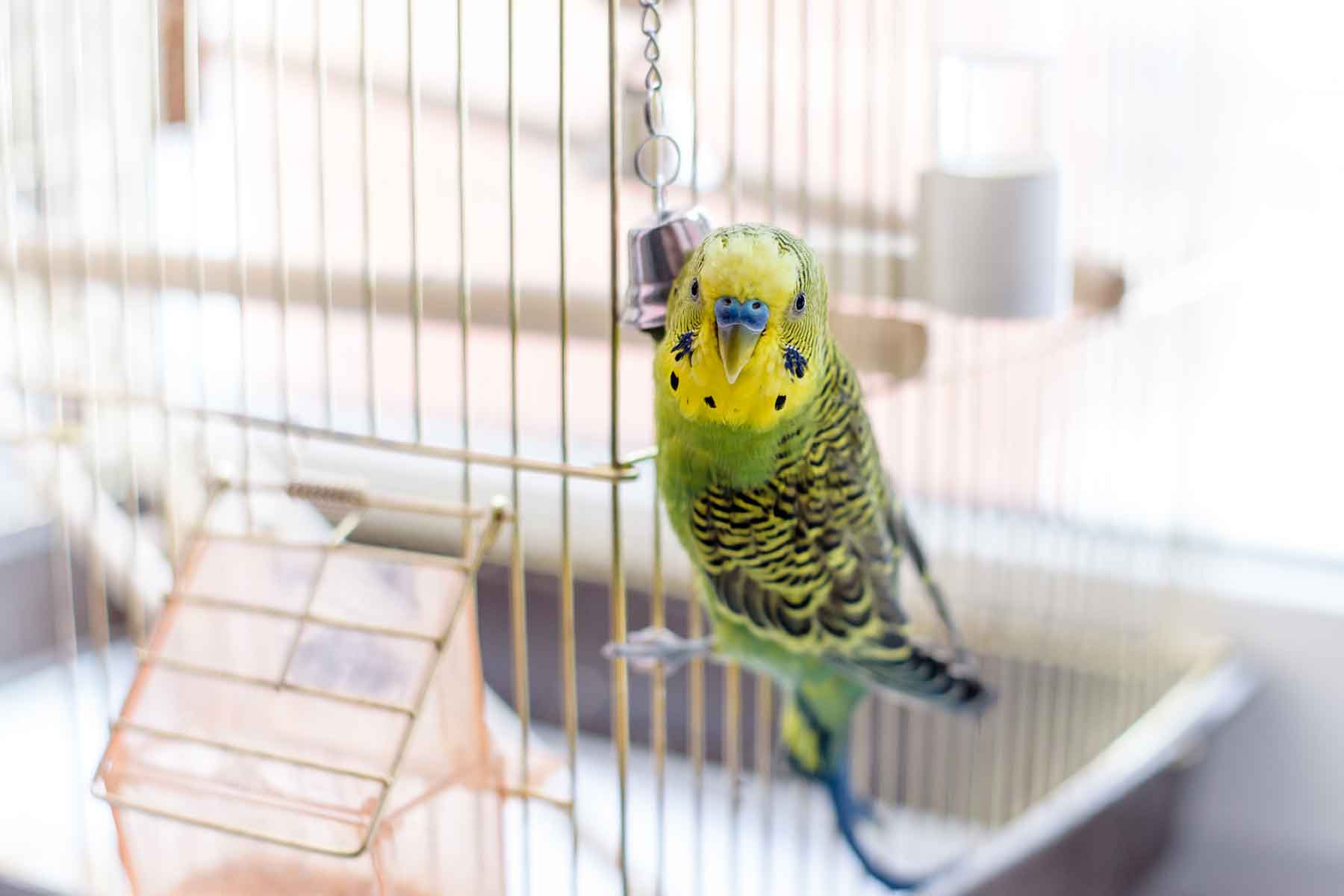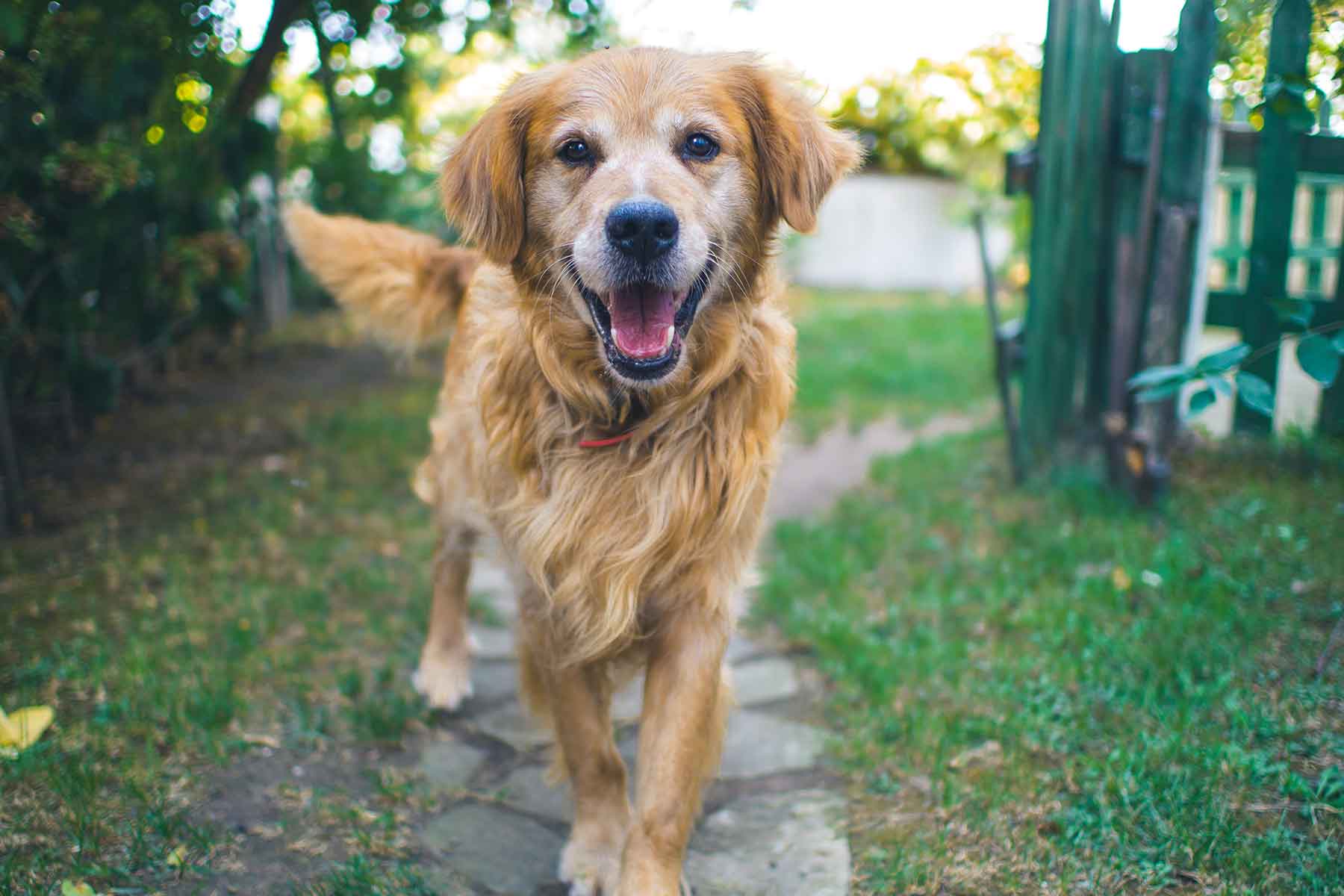When you bring a new puppy into your home there will be a period of adjustment. Your goals are to help your puppy to quickly bond to his/her new family, and to minimise the stress associated with leaving his/her mother, litter mates, and former home. If there are already dogs in the new home the transition may be a little easier as the puppy is able to identify with his/her own kind. Obtaining two puppies would be another option. However, most puppies, especially those obtained before 12 weeks of age, will form attachments almost immediately to the people and any other pets in the new home, provided that there are no unpleasant consequences associated with each new person and experience.
How to Prevent Your Puppy From Doing Damage or Getting into Mischief
The rule of thumb for dog training is “set the dog up for success”. Supervise the puppy at all times until he/she has learned what they are allowed to chew, and where they are supposed to eliminate. Keeping the puppy on a 3 metre remote leash is an excellent way to keep him/her in sight, and to train them not to wander off. This is particularly helpful with a highly investigative puppy or for a very busy household.
At any time that the puppy cannot be supervised, such as throughout the night or when you need to go out, house them in a secure area. An escape-proof crate, a dog run, or collapsible pen are simple, highly effective, and most important, safe. The puppy could also be confined to a room that has been carefully dog-proofed. When selecting your dog’s confinement area it is useful to consider a number of factors. The dog will adapt fastest to the new area if they are associated with rewards. Have the puppy enter the area for all their treats, toys, and perhaps food and water. The area should have some warm, dry, comfortable bedding, and should never be used for punishment (although it can, and should, be used to prevent problems). Housing the puppy in isolated areas where there is minimal human contact, such as in a laundry room or basement, should be avoided. In fact, often the best area is a kitchen (so that this can also be the dog’s feeding area) or a bedroom (so that it becomes the dog’s sleeping area). Each time the puppy needs to be confined, it should first be well exercised and given an opportunity to eliminate.
Another consideration in selecting the type of confinement area is how long you may need to leave the dog alone. Anytime the puppy will be left alone for longer than he/she can control their elimination, you must provide an area for elimination. A room or collapsible pen with a paper-covered area would be needed. A cage or crate could be used for owners that do not have to leave their puppies confined for longer than 2 or 3 hours.
Should I Punish My Puppy for Misbehaviour?
Every effort should be made to avoid punishment for new puppies as it is generally unnecessary and can lead to avoidance of family members, at a time when bonding and attachment is critical. By preventing problems through confinement or supervision, providing for all of the puppy’s needs, and setting up the environment for success, little or no punishment should ever be required. If a reprimand is needed, a verbal “no” or a loud noise is usually sufficient to distract a puppy so that you can then redirect the puppy to the correct behaviour.
How Can I Prevent Problems?
Supervise the puppy at all times that he/she is not confined to ensure that the puppy does not get themselves into mischief, or cause damage to themselve or the home.
Leaving a remote leash attached is all that is usually needed to prevent or interrupt inappropriate behaviour such as garbage raiding, chewing on household items, house-soiling, or wandering off into rooms or areas that are out of bounds. If the leash is attached to a head halter you can quickly correct other problems that might arise, such as nipping, play biting, and jumping up.
When the puppy cannot be supervised, confinement (as discussed above) will be necessary. Rewarding the puppy for good behaviour such as lying quietly in bed without being asked is also important in preventing problem behaviours.
How Can I Provide for My Puppy’s Needs?
Chewing, play, exercise, exploration, feeding, social contact and elimination are basic requirements of all puppies. By providing appropriate outlets for each of these needs, few problems are likely to emerge. Puppies should be given chew toys that interest them and occupy their time. When supervised, the owner can allow the puppy to investigate and explore their new environment and can direct the puppy to the appropriate chew toys (and away from inappropriate areas).
Play, exercise, affection, training, and handling must all be part of the daily routine. New tasks, new routines, new people and new forms of handling can be associated with rewards to ensure success. And, of course, the puppy will need to be provided with an acceptable area for elimination, and will need guidance until he/she learns to use this area.
Find out more about how to care for your puppy.
How Do I House-Train My Puppy?
All it requires are a few basic rules to house-train puppies within a few days. This does not mean that the puppy will be able to be trusted to wander throughout the home without eliminating. What the puppy should quickly learn is where he/she should eliminate, and the consequences of eliminating indoors when the owner is supervising
- Puppies have a strong urge to eliminate after sleeping, playing, feeding and drinking. Prepare to take your puppy to his/her selected elimination area within 30 minutes of each of these activities. In addition, although some puppies can control themselves through the entire night, most puppies need to eliminate every 3 to 4 hours during the daytime. With each passing month, you can expect your puppy to control themselves a little longer between elimination times. The puppy should be taken to his/her elimination area, given a word or two of verbal encouragement (e.g. “Hurry up!”) and as soon as elimination is completed, lavishly praised and patted. A few tasty food treats can also be given the first few times the puppy eliminates in the right spot, and then intermittently thereafter. This teaches the puppy the proper place to eliminate, and that elimination in that location is associated with rewards. Some puppies may learn to eliminate when they hear the cue words (eg. “Hurry up!”). Always go outdoors with your puppy to ensure that it has eliminated and so that rewards can be given immediately upon completion, and not when the dog comes back indoors (too late!).
- When indoors the puppy must be supervised so that you can see when he/she needs to eliminate and immediately take them outdoors to their elimination area. Should pre-elimination signs (circling, squatting, sneaking-off, heading to the door) occur, immediately take the dog to their elimination site, give the cue words, and reward the puppy for elimination. If the puppy begins to eliminate indoors, use a verbal reprimand or shake can, and immediately take the puppy outdoors to their proper site, so that they can complete the act. Rather than using punishment, it is best to always supervise your puppy. One of the best techniques is to leave a remote lead attached.
- When you are not available to supervise, the puppy should be confined to his/her confinement area. Be certain that your puppy has had a chance to eliminate, and has had sufficient play and exercise before any lengthy confinement. If the area is small enough, such as a pen or crate, many puppies will have sufficient control to keep this area clean. This means that when you come to release the puppy from confinement, he/she must be taken directly to their elimination area. If the area is too large for the puppy to keep clean, or the puppy is left alone too long for them to control themselves, the entire area, except for the puppies bed and feeding spot, should be covered with paper for elimination. Once the puppy starts to limit his/her elimination to some selected areas, unused areas of the paper can be taken up. For owners that intend to continue to use paper for training, even when home, the puppy should be supervised when released from confinement, and then returned to this area when pre-elimination signs are seen.
Why Does My Puppy Refuse to Eliminate in My Presence, Even When Outdoors?
Puppies that are not supervised and rewarded for outdoor elimination, but are constantly being disciplined and punished for indoor elimination, may soon begin to fear to eliminate in all locations in your presence. These puppies do not associate the punishment with indoor elimination; they associate the punishment with the presence of the owners.
Follow our basics for training your dog and join our Puppy Preschool classes so that you can start off on the right paw and give them the best start in life.
What Should I Do If I Find Stools or Urine in an Inappropriate Spot?
There is no point in punishing or even pointing out the problem to the puppy. Only if the puppy is in the act of elimination will he/she understands the consequences (rewards or punishment). In fact, it is not the puppy who has erred, it is the owner who has erred by not properly supervising.
How Can I Teach a Puppy to Signal That it Needs to go Out to Eliminate?
By regularly taking the dog outdoors, through the same door, to the same site, and providing rewards for proper elimination, the puppy should soon learn to head for the door each time he/she has to eliminate. If you recognise the signs of impending elimination and praise the puppy whenever he/she heads for the doorway, the behaviour can be further encouraged.
Puppies that have been interrupted or reprimanded on one or more occasions as they begin to eliminate indoors, may begin to try to sneak away, whine or show some form of anxiety, when they feel the urge to eliminate, but cannot escape from the owner’s sight. If you can pick up on these cues, and take the puppy directly to the outdoors for elimination and reward, the puppy may consistently begin to show these signals when he or she needs to eliminate, and may even begin to take you to the exit door.
When Will I Be Able to Trust My Puppy to Wander Loose Throughout the Home?
Generally you will want your dog to have been error free around the house for about a month before you can begin to decrease your confinement and supervision. The first time you leave the puppy unsupervised should be just after taking the dog outdoors for elimination. Gradually increase the length of time that your dog is allowed to roam through the home without supervision. If the dog has been able to go unsupervised for a couple of hours without an “accident”, it might then be possible to begin going out for short periods of time. Of course, if the dog still investigates and chews, then confinement and supervision may still be necessary.
Puppy Preschool
All puppies need to learn what is good behaviour and our Puppy Preschool is able to provide you and your puppy all the guidance you need to gain important socialisation skills
All puppies need to learn the basics of socialisation and how to be a good dog and our Puppy Preschool is the perfect start for both you and your puppy to give them the opportunity to grow into a confident and well-behaved dog. Find out if one of our vet clinics near you is offering the program and ask for details.

